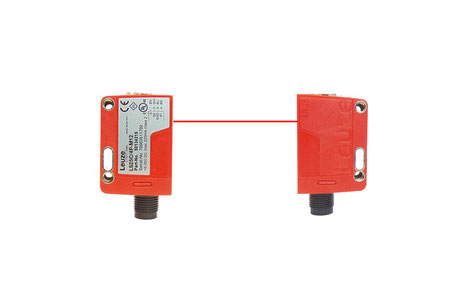Key Takeaway
Photoelectric sensors can be either analog or digital. Analog photoelectric sensors provide continuous output that changes with the light intensity, ideal for applications requiring precise measurements. These sensors output varying voltages or current based on the detected object’s distance or size.
Digital photoelectric sensors, on the other hand, give a simple on/off signal. They’re used when you only need to know if an object is present or not. The choice between analog and digital depends on the level of accuracy needed in your system.
Understanding the Difference Between Analog and Digital Sensors
Analog and digital sensors serve similar purposes but deliver their outputs differently. Analog photoelectric sensors provide a continuous signal that varies in intensity based on the proximity of the object. The closer the object is, the stronger the signal. This feature makes them ideal for tasks requiring precise measurements, such as distance or depth monitoring.
On the other hand, digital sensors offer binary output—either ON or OFF. These sensors are programmed to trigger once the light beam is broken or reflected. Unlike analog sensors, digital ones are more suited for straightforward tasks where precision isn’t as critical but reliability and simplicity are.

When to Use Analog Photoelectric Sensors in Industrial Applications
Analog photoelectric sensors are a go-to solution when your application demands high precision and continuous monitoring. These sensors excel in industries where accurate measurements are critical—like manufacturing, packaging, or material handling. Picture this: you’re working with a conveyor belt system where the exact position, thickness, or distance of an object must be monitored in real-time. Every millimeter matters, and that’s where analog sensors shine. They provide continuous feedback, which is crucial for maintaining consistency in high-precision tasks.
For instance, think about the process of measuring the thickness of materials in a production line. Analog sensors can monitor slight variations that digital sensors might miss. They ensure that each product meets exact specifications, which is key to maintaining quality and avoiding wastage. If your job requires tracking gradual changes, such as thickness or distance, then an analog photoelectric sensor is your best bet. These sensors offer detailed and smooth data, making them perfect for tasks requiring accuracy.
When Digital Photoelectric Sensors Are the Better Choice
Digital photoelectric sensors, on the other hand, are perfect for simpler tasks where speed is more critical than precision. These sensors offer a straightforward ON/OFF signal, which makes them highly effective for object detection. If your goal is simply to know whether something is there or not—without needing to measure its size or position—digital sensors are the clear choice. They are especially useful in applications like automatic doors or production lines where efficiency is key.
Imagine you’re working in a fast-paced environment, such as a packaging line, where you only need to detect the presence of a box. Digital sensors quickly send an ON/OFF signal when an object interrupts their light beam. This quick response is exactly what’s needed to keep the process moving efficiently. They may lack the detailed feedback of analog sensors, but for tasks that don’t require high sensitivity, digital sensors get the job done with speed and reliability.
Key Differences in Signal Output Between Analog and Digital Sensors
The key difference between analog and digital photoelectric sensors lies in their signal output. Analog sensors provide a continuous range of values, making them perfect for tasks that need detailed measurements, such as tracking the position or thickness of an object. These sensors continuously monitor changes and provide a smooth, real-time data stream. That’s why they’re often chosen for complex tasks that require precision.
Digital sensors, in contrast, offer a binary signal—either ON or OFF. While they may not provide detailed data, they are incredibly fast at making decisions. This makes them ideal for applications that prioritize speed over precision. For instance, digital sensors excel in high-speed manufacturing lines, where the task is as simple as knowing whether an object is present or not. This straightforward signal is quicker to process, making digital sensors the go-to choice for tasks requiring rapid response times.
How to Choose Between Analog and Digital for Specific Applications
Choosing between analog and digital sensors depends entirely on your application’s needs. Analog sensors are perfect for tasks requiring precision, such as tracking the position or thickness of materials in manufacturing. If your work involves continuous monitoring and accurate measurements, analog sensors will give you the detailed feedback necessary for success. They’re built for complex tasks where slight variations in measurements can make a significant difference.
On the other hand, if your application is simpler, like detecting whether an object is present, digital sensors are the better choice. They offer quick, reliable signals that are easy to integrate into any system. Digital sensors are more cost-effective and efficient for tasks where precision is not critical, such as counting objects on a production line. Ultimately, understanding the specific demands of your industrial application will help you make the right choice, balancing accuracy with speed.
Conclusion
In conclusion, choosing between analog and digital photoelectric sensors depends largely on your application’s needs. Analog sensors excel in tasks requiring high precision and continuous monitoring, while digital sensors offer faster, more straightforward solutions for tasks where simple object detection is required. The key is understanding the strengths and limitations of each type to make an informed decision. Whatever your choice, both analog and digital photoelectric sensors play an essential role in optimizing industrial processes, making them indispensable tools in today’s manufacturing landscape.
